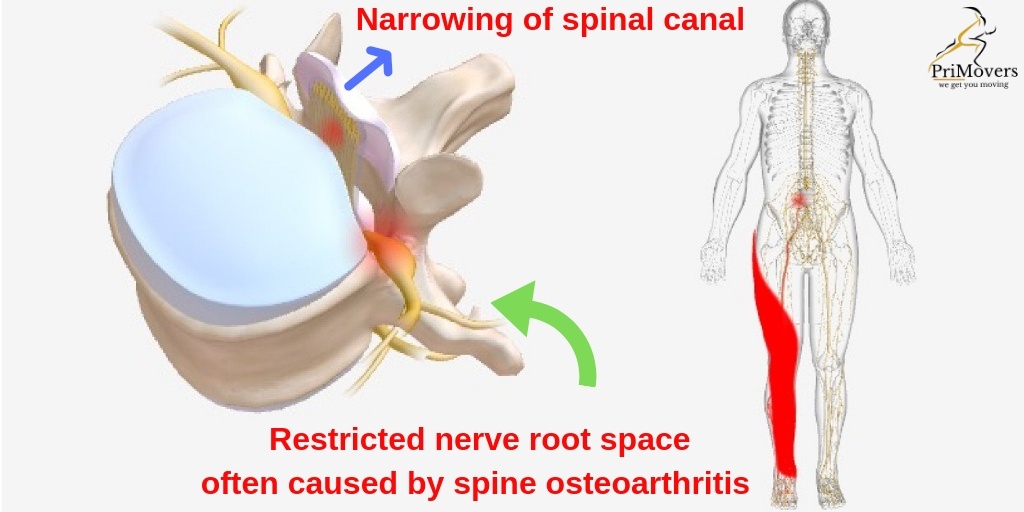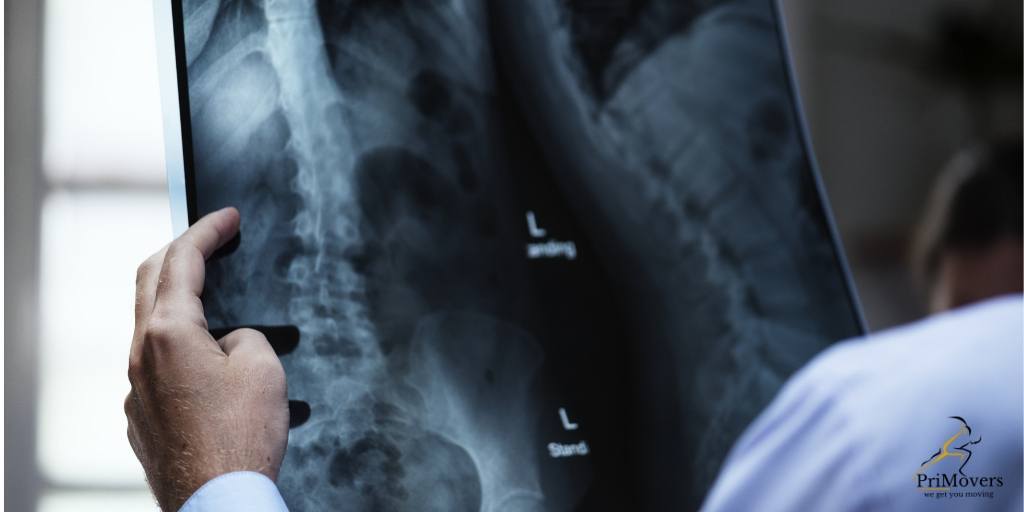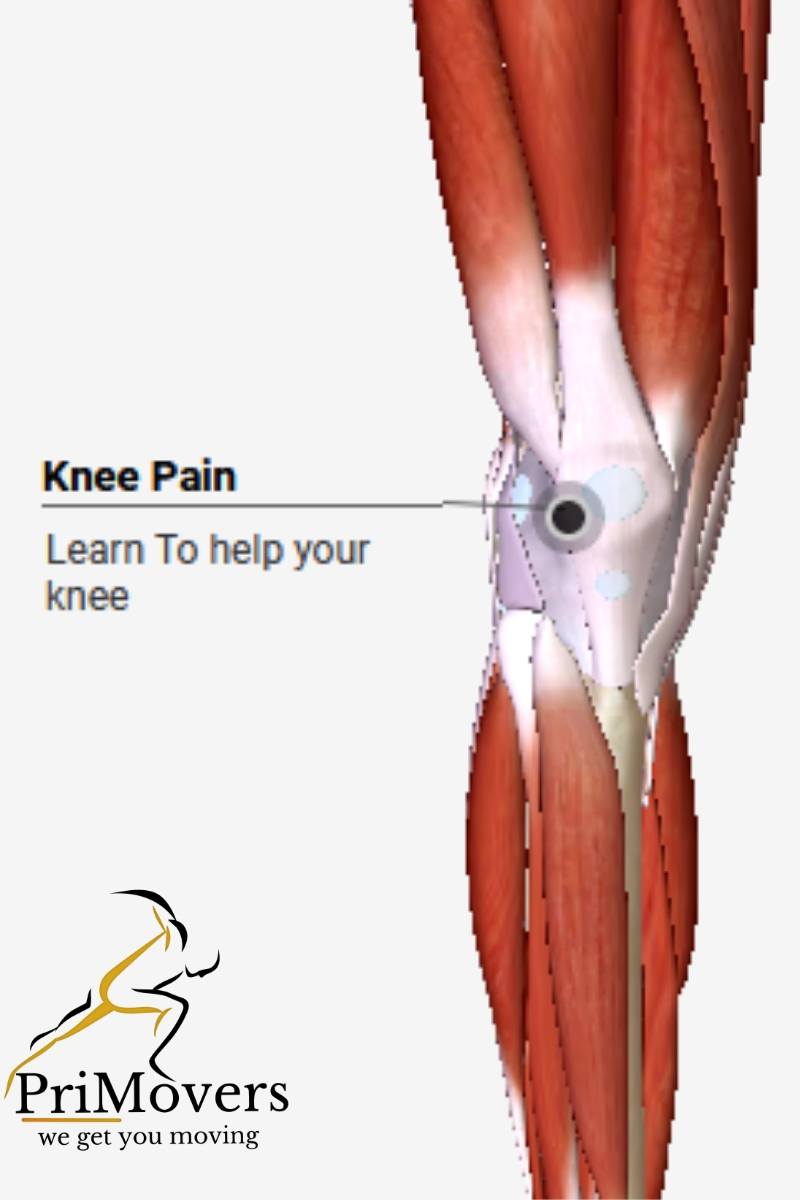I know you must have tried the number of treatment methods including rest, medications, activity modifications and exercises to cure back pain but every time you wake in the morning there is still constant, nagging pain and stiffness which makes you feel whether current treatment is really helping you or not.
If you are experiencing low back pain even after taking countless medications to help yourself with the pain but still haven't felt any relief then you're not alone.
With the advent of the technological industries, 70-80 % of the population is suffering from musculoskeletal ailments which predominately involves low back pain. Both men and women are equally affected by low back pain, which range from dull, constant pain to sudden, sharp pain.
Low back pain can start abruptly from direct injury/accident or lifting something heavy or slow continuous build up overtime due to age related degenerative process, sedentary lifestyle, lack of spine mobility and underlying muscle imbalances around low back.
Most low back pain is acute or short term in nature and lasts from few days to 4 weeks. Acute back pain tends to resolve on its own with proper self care without loss of spine mobility and function. It results from mechanical imbalances in the spine which affects that the way low back joints, muscles and ligaments work together.
If you neglect your low back pain in the initial phases then it can last longer known as sub acute or chronic pain.
Sub acute low back pain lasts between 4 weeks and 12 weeks.
Low back pain can persist even after treatment or back pain rehab for 12 weeks or more. this type is known as chronic low pain.
10-15% people with acute low back pain develop chronic back pain even after taking treatment where symptoms persist for more than 1 year. In some cases, chronic low back pain responds well to conservative physical therapy sessions, but in other cases pain persist despite medications, injections, physical therapy and surgical procedures.
But, know what? Most Low Back Pain is absolutely curable, so start working on it the right way!
Now, let me help you learn about your low back pain and treatment strategies which will take you one step closer to achieve complete freedom from low back pain.
Below you will learn:
Low back consists of 5 blocks of Lumbar spinal bones (referred as L1-L5), 4 blocks of sacral bones fused to form 1 unit and cocyx (tail bone). Adjacent to lower spinal bones, there are 2 pelvic bones on each side (Pelvic bones with lower spine bones (sacral bones) form Sacroiliac joint and pelvic bone with thigh bones form Hip joint.

Low back is surrounded by number of ligaments (which hold the bones together) and major stabilizing muscles of our body which is also known as “CORE MUSCLES”. These core muscles only not help in providing an abdominal tone to our abdominal organ or viscera but also provides stability to our low back spine by acting as a natural corset through shock absorption method.



Failure of these ligaments and muscles to provide enough stability along with other movement faults result in various pain conditions in the low back.
Your low back pain presentation can be absolutely different from other person with back pain as there are different reasons and mechanisms of Low back Pain. So, it's imperative to learn about different mechanical faults, imbalances and conditions to provide appropriate care and treatment.
Most common conditions:
- Disc prolapse or bulge (Also known disc herniation): Sitting for too long or repeated forward bending with poor low back muscles strength result in undue backward pressure on inter-vertebral discs which cause disc bulge. In this case sitting for long or forward bending may increase your pain symptoms. Note: I often find people with disc bulge get the recommendation by other medical professionals that they can't bend forward for long term which is not true. Forward bending needs to avoided in acute stages of disc bulge due to inflammation of low back structures or sometimes the nerve

Nerve compression by bulging spinal disc
- Spinal stenosis: Sometimes, bulging disc(s) compromise the space for Spinal cord which results in the nerve compression symptoms down the leg with or without central low back pain. In spinal stenosis, you may find increase in low back pain symptoms in standing or walking, decrease in symptoms in sitting.

Spinal Stenosis:Narrowing of spinal canal
- Sciatica: It is caused by the compression of sciatic nerve in the low back or buttock region. It results in radiating pain down the leg with or without low back pain. Wondering how sciatica is different from spinal stenosis as both conditions cause nerve compression pain symptoms down the leg? In Sciatica, pain in the thigh or leg increases with sitting or forward bending whereas thigh or leg pain reduces in sitting or forward trunk bending in case of Spinal Stenosis.
- Lumbar Spondylosis: It is an age relative degenerative process in spine bones and joints which is common for everyone. This degenerative process is faster in case of low back with mechanical imbalances and muscle weakness..
- Lumbar instability: Low back pain can due to weak or overstretched spinal ligaments. It is very common in people those who are very flexible and engage in flexibility exercises routine instead of doing strength and stability low back exercise routine.
- Spinal List (Spinal deviation): Refers to the side deviation of spine due to low back nerve root irritation.
- Scoliosis: It is a condition where person has a sideways spine curve, usually "S" or "C" shaped. It can be structural (actual bony irregularly since birth) or functional (due to muscular imbalances). In some cases, the curve is stable while in others it increases overtime. Mild scoliosis doesn't typically cause problem while severe scoliosis can interfere with breathing. Scoliosis is named on the side which is convex.
- Spondylolisthesis: It is one of the low back pain condition in which there is forward slip of one of the spinal vertebra above on vertebra below. It can be present with or without spine bone fracture. Usually it is due to poor deep core muscle control or inflexibility of low back muscles. In this case you may feel increase in back pain in spine extension positions such as standing or walking.
- Retrolisthesis: In retrolisthesis, low back pain is felt due to backward slip of vertebra above on vertebra below. It usually presents the weakness of low back muscles. In case you may experience central low back pain in forward bending positions.
- Piriformis syndrome: Compression of sciatic nerve due to the tightness of the deep buttock muscle "piriformis". It's flat muscle in the buttock region near top of the hip joint, In 50-70% population sciatic nerve passes underneath piriformis muscle, spasm of the piriformis muscle results sciatic nerve compression with radiating pain symptoms down the leg.
Low back pain seldom related to serious medical conditions. If it occurs it requires immediate medical attention:
1. Infections: Low back infections are not common but if it occurs it causes back pain. If the infection involves the spine bone (vertebrae), it's called osteomyelitis. If it involves sacroiliac joint , it's known as sacroilitis.
2. Tumors: It is relatively rare in the low back. Occasionally, begin in the back, but most commonly occur as a result of the spread of cancer elsewhere in the body.
3. Cauda Equina Syndrome: Sometimes part of ruptured low back discs compress the part of the low back nerve bundles which results in loss of bowel and bladder function. It's very rare complication of ruptured disc but serious, it requires immediate medical intervention to relieve nerve bundles compression.
4.. Kidney stones: Kidney stones can cause low back pain which is sharp in nature, usually on one side.
5. Abdominal aortic aneurysm: It is one of the rare but serious condition where there is an abnormal dilatation (aneurysm) of large blood vessel supplying abdomen, pelvis and leg. Back pain can be a sign of enlarging aneurysm and it's very crucial to get assessed for the risk of aortic aneurysm rupture if suspected,
Not all back pain conditions are same. So, do not treat them in same fashion. Find out the reasons of your back pain with your physical therapist to treat it effectively.
There are number of bio-mechanical faults which results in Low Back Pain.
- Faulty movement patterns: Foot rolling inwards: Over Pronation, foot rolling outwards: Supination, Leg bone abnormal rotation imabalances.
- Inflexibility of muscles around low back, hip, knee.
- Poor core muscles control and other muscular imbalances around low back and hip (usually lower cross pattern: Tight front hip muscles with tight low back and weakness abdominal muscles with weak buttock muscles especially buttock: gluteal muscles).
- Lack of spine stability and proprioception (position sense) in the low back joints.
- Poor spine posture (hunching upper/mid back, exaggerated low back arch)
- Poor Hip and Pelvic bone mobility, strength and stability.
- Right versus left leg difference (Leg Length Difference)
- Tight IT bands: Pull pelvic bone out of alignment.
Most Low back pain conditions can be diagnosed based on history, mechanism of injury and thorough physical examination.
When discussing about your low pain try to provide as many details as possible such as location of pain, timing of pain, presenting symptoms, related symptoms, factors which increase or decrease your low back pain such as coughing or sneezing, sitting, standing or walking.
This information will help your Physical Therapist to make the appropriate impression or accurate diagnosis to initiate rehab program towards your low back pain relief. Based on examination and diagnosis, your physical therapist may refer you to other medical professional in case needed.
Location of Low back pain:
Provide information about the location of your low back pain to your physical therapist or doctor as it provides some very important clues about your problem area, for example:
a. Pain in the center of low back or side of the low back.
b. Radiating pain down the front/side/back of the thigh/leg and/or foot (this is to ascertain which nerve root is involved)
Timing of the low back pain
Make a note of the information about the time of the day when you experience maximum or minimum pain in the low back provides useful insights about your injury. For instance,
1. Low back pain which is more in the morning but improves with day activity indicates inflammatory conditions such as lumbar spondylitis, osteoathritis and rheumatoid arthritis.
2. Whether you feel more pain in the low back after sitting for long or standing or walking or forward body bending or back spine extension position.
Associated/related symptoms
Do let your physical therapist or doctor know if you experience any other symptoms besides low back pain such sweating, fever or chills, headache, muscle aches, loss of appetite, general body weakness are these are sign of likely infection in the body.
List of physical /clinical tests performed by your physical therapist or doctor.
Back pain source doesn't necessarily have to be from back. it can be from somewhere else. This is known as referred back pain.

Spinal Medical imaging
In most back pain conditions, medical investigations are not required. Clinical examination done by physical therapist or physician provides satisfactory clue about the root cause of the back pain.
Sometimes, based on the impression made by your physical therapist or doctor. They might ask you to get one of the below mentioned investigation test to rule out the issue area. (Only in the required cases)
- X ray: Different views (AP, lateral, oblique) to see any bony changes in case of Osteoarthritis, traumatic arthritis, rheumatoid arthritis. spondylolisthesis and retrolisthesis.
- MRI: To visualize soft tissue changes including muscles, ligaments and disc structure.
- Diagnostic Ultrasound: It helps in visualizing swelling in the muscle tendons (tendon injuries)
- Nerve Conduction Velocity Test (NCV): In this test needle and surface electrodes are used to find out the intensity of nerve signals transmission to lower body (helps in early detection of nerve compression)
- Blood tests: It's not normally used to diagnose the reason of your low back pain. However, they may be ordered in cases to find infection, inflammation and arthritis (rheumatoid arthritis). Blood test includes complete blood count. ESR (erythrocyte sedimentation rate), C-reactive protein, HLA-B27 (genetic marker in case of ankylosing spondylitis and reactive arthritis).
Low Back Pain Prognosis
Prognosis of back pain is quite good but require proper care. Chronic and long standing back pain tends to have persistent pain course, though it responds really well to physical therapy but reoccurrences are common.
Best Rehab and Recovery Treatment methods for Back Pain
Treatment mainly depends on the diagnosis and root cause of back pain.
Unless it's a fracture, back pain can be treated conservatively with physical therapy with good success to improve pain levels and functional activities. Best effective treatment approaches include rest, ice/hot compression, Physical Therapy (involving customized flexilibility, stability/proprioception, strengthening exercises). In very limited cases bracing and support techniques are used.
Rest: Let me be very clear here, rest doesn't mean bed rest by any chance. It means taking rest from things which gives you back pain. that also means that you have complete freedom to move around and do things that doesn't cause back pain. In fact, research has shown good results in patients who tend to move (walk) instead of taking bed rest (Total or complete bed rest is usually indicated in spine fracture patients).
Question. Do you need total bed rest as you are experiencing low back pain?
Answer: No, you don't need bed rest when you are experiencing low back pain. It is one of the biggest myths among low back patients.
Note: I would like to highly recommend you to move or walk as much as possible to the point it's pain free for the back or does not increase your symptoms (provided spinal fracture is not the reason for your back pain).
Ice compression: Besides rest, ice pack compression tremendously helps in reducing swelling, inflammation and pain in the low back. For cold compression you can use ice packs or ice bags.
Cold compression should not be directly over the skin and it's application should not exceed more than 10 mins at a stretch to avoid cold burn. You can do cold compression multiple times a day.
Physical Therapy is imperative part of treatment towards your back pain.
Physical Therapists are the movement specialists who can help you reduce back pain and show you exactly how you can prevent common back injuries by showing you various strengthening, stability and stretching programs so that you do not have any functional limitations which is holding you back to perform optimally.
Physical Therapy is imperative part of treatment towards your back pain.
Your physical therapists use various therapeutic techniques involving soft tissue manipulation, trigger point therapy, myofascial release techniques, selective stretching, joint mobilization and customized exercises such as flexion, extension exercise routine with core muscles strengthening to alleviate your back pain, inflammation.
They help you regain range of motion, muscle strength, overall balance and improve spinal stability and position sense (proprioception) to get you back to pre-injury levels of activity.
They also educate you about gradual increase in essential corrective muscle strength exercises and provide advise to athletes about their return to sporting activities
Unless there is spine fracture or severe back injury, you can start physical therapy immediately after injury without any prescription by any doctor or before back injury (for preventive back injury programs)
Apart from rehab specific treatment techniques of mobilizing and stretching, strengthening your muscles around knee joint, your physical therapist might use additional supportive techniques like kinesiology tapping to provide stability and improve pain levels by inhibiting the hyperactive muscles to enhance healing and recovery.
Other treatment options include pain medications, injections and operative procedures.
Pain Medications (NSAIDs): Your doctor might prescribe you pain medications (NSAIDs: Non steriodal Anti-inflammatory drugs) to reduce back pain, swelling and inflammation during acute episodes of inflammatory conditions such as lumbar spondylitis.
Other Medications:
Based on the root cause of your knee pain other medications can be prescribed by your doctor such as Disease Modifying Anti-Rheumatic drugs in case of Rheumatoid arthritis (DMARDs) or antibiotics in case of back pain due to joint infections.
Transcutaneous Electrical Nerve Stimulation: It's electrical stimulation over the pain area using electrodes to block the pain signals from the peripheral nerves. It helps in modifying the perception of pain. Recent studies, however have shown mixed results on its effectiveness in reducing the back pain.
Epidural steroid Injections: They are commonly used as a short term solution for treating low back pain and inflammatory condition such as sciatica. Steroid injections are not found to be effective in treating chronic back pain.
Recent advances in research shows increase in level of pain in patients with spinal stenosis with epidural steroid injections compared to patients who didn't get injections.
Spinal Surgery: It is considered to be the last resort if the pain persists after all conservative therapy options. However, the results of surgery are not always promising. There is little evidence on which procedure works best for any particular condition. If you are considering spinal procedures towards your back pain, make sure you are informed about all related risks.




Hi, this is a comment.
To get started with moderating, editing, and deleting comments, please visit the Comments screen in the dashboard.
Commenter avatars come from Gravatar.